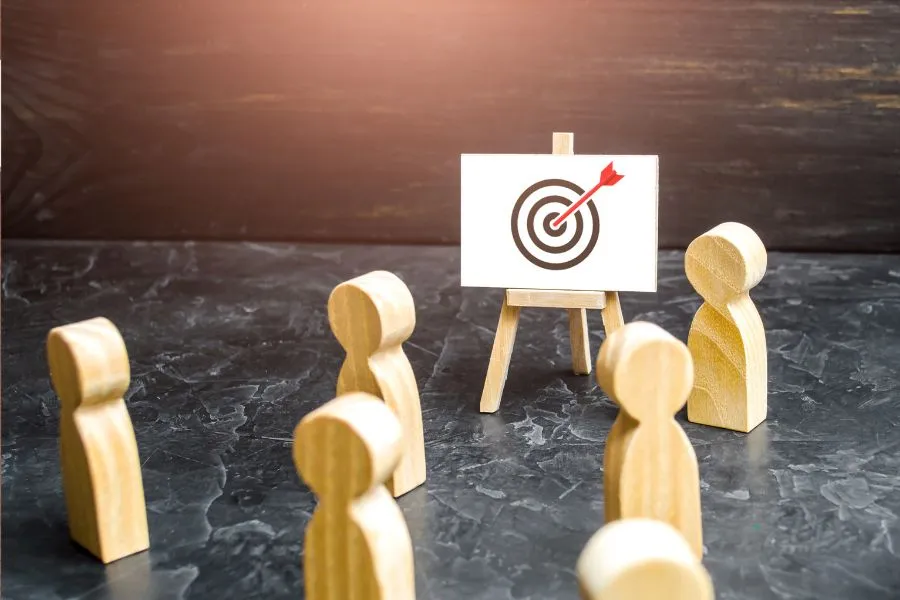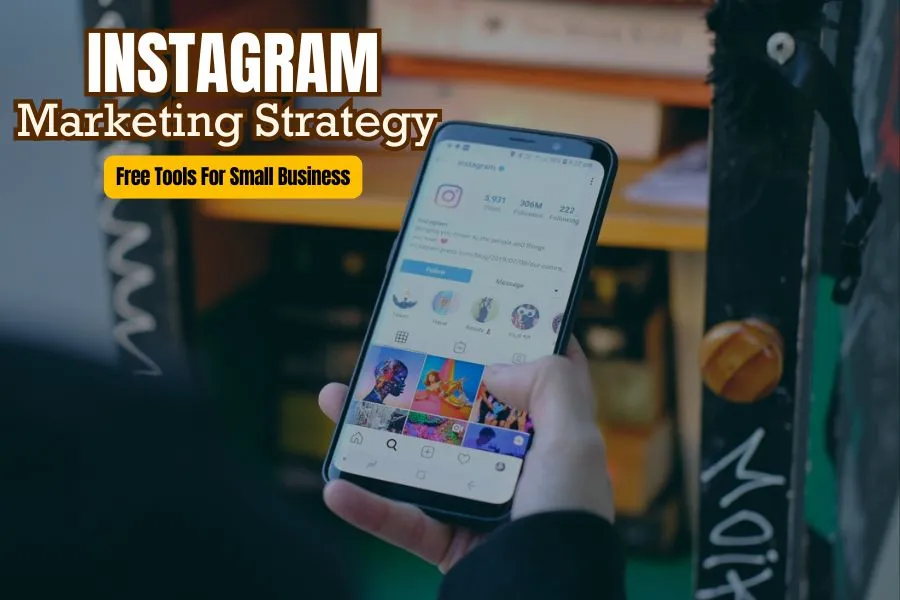Table of Contents
Introduction
In today’s digital age, Instagram has emerged as a powerful platform for businesses of all sizes. However, for small businesses, it offers an unparalleled opportunity to connect with customers, build brand loyalty, and drive sales. But how can a small business effectively harness the power of Instagram? This article will explore Instagram marketing strategy for small business, Instagram marketing examples, Instagram marketing tools to help small businesses thrive on Instagram in 2024.
Instagram Marketing Strategy for Small Businesses
Setting Clear Objectives
Before diving into content creation, it’s essential to define what you want to achieve with your Instagram marketing efforts.
What Do You Want to Achieve?
Are you looking to increase your traffic of website or brand awareness, or boost sales? Your goals will shape your strategy and determine the content you create.
Defining Success Metrics
Once your objectives are set, establish key performance indicators (KPIs) to measure success. These could include engagement rates, follower growth, website traffic, or sales generated from Instagram.
Understanding Your Target Audience

Creating Buyer Personas
Develop detailed profiles of your ideal customers. Include demographics, interests, and behaviors. This will help create content and help you tailor your messages to your audience’s preferences.
Example:
Imagine you’re a skincare brand targeting young professionals in their late 20s and early 30s. Your ideal customer, “Sarah,” is a busy city dweller who values natural ingredients and effective products. She’s active on social media, especially Instagram, and is interested in beauty trends and healthy living.
Analyzing Audience Behavior on Instagram
Use Instagram’s analytics tools to understand when your audience is most active, what type of content they engage with, and how they interact with your posts. This data will help you optimize your posting schedule and content strategy.
Example:
Using Instagram’s analytics, you discover that your posts receive the most engagement on Tuesdays and Thursdays between 6 PM and 8 PM. You also notice that your Reels featuring skincare tips and product demonstrations consistently outperform other content types.
Content Planning and Creation
Creating content that resonates with your audience is key to your Instagram marketing success.
- Product showcases: High-quality photos of your products, highlighting their benefits and unique selling points.
- Behind-the-scenes: Videos or photos giving your followers a glimpse into your brand’s story and culture.
- Educational content: Tips and tutorials on skincare routines, ingredient benefits, and common skin concerns.
- User-generated content: Repost photos and videos from your customers using your products.
- Instagram Reels: Short, engaging videos with catchy music and effects that showcase your products or share skincare tips.
The Importance of Consistency
Consistency is crucial on Instagram. Regular posting keeps your brand top-of-mind and helps you build a loyal following. Make a content calendar to plan your posts and ensure you maintain consistency of content.
Use Instagram Stories and Reels
Instagram Stories and Reels are essential tools for engaging your audience.
Why Stories and Reels Are Essential
Stories and Reels offer a more dynamic way to connect with your audience. They allow you to share more spontaneous, authentic content that can increase engagement and reach.
Examples of Effective Use
Consider a small local bakery that uses Stories to showcase daily specials and Reels to share quick, fun recipes. These formats give followers a behind-the-scenes look at the business, creating a more personal connection.
Instagram Ads
If you have the budget, Instagram ads can significantly enhance your reach.
1. Types of Instagram Ads
Instagram offers several ad formats, including photo ads, video ads, carousel ads, and story ads. Choose the format that best aligns with your campaign objectives and content style.
Photo Ads: These ads feature a single image and a caption. They are suitable for showcasing products, highlighting brand values, or promoting events.
Video Ads: Video ads allow you to tell a story, demonstrate a product, or share a tutorial. They can be around 60 seconds.
Carousel Ads: This format allows you to showcase multiple images or videos in a single ad, providing more context and information.
Story Ads: These full-screen ads appear between user stories and can be up to 15 seconds long. They are ideal for reaching a wider audience and driving immediate engagement.
2. Setting a Budget and Targeting
Set a budget for your marketing goals. Use Instagram’s targeting options to reach specific demographics, locations, and interests to maximize the effectiveness of your ads.
Collaborating with Influencers
Influencer marketing can be a powerful tool for small businesses on Instagram.
Finding the Right Influencers
Find influencers whose followers relate to your target audience. Micro-influencers, who have smaller but highly engaged audiences, can be particularly effective for small businesses. When searching for influencers, focus on those whose followers align with your target audience. Consider factors such as:
- Niche or industry: Does the influencer’s content align with your business’s products or services?
- Engagement rate: How actively do their followers engage with their content?
- Audience demographics: Are their followers similar to your ideal customers?
Tips for Successful Collaborations
Clearly define the terms of your collaboration, including deliverables, timelines, and compensation. Ensure that the influencer’s content style aligns with your brand to maintain authenticity. To ensure a successful partnership, clearly define the terms of your collaboration, including:
- Deliverables: What specific actions will the influencer take (e.g., creating a sponsored post, sharing a story, participating in a giveaway)?
- Timelines: When should the content be published?
- Compensation: How will the influencer be compensated (e.g., payment, product, or a combination)?
Instagram Marketing Examples for Small Businesses
Example 1: A Local Boutique
A small boutique used Instagram to showcase its unique clothing line through styled photoshoots and customer testimonials. By engaging with local fashion influencers and running targeted ads, the boutique saw a 40% increase in sales within six months.
Example 2: A Handmade Crafts Store
A handmade crafts store built its Instagram presence by sharing DIY tutorials and behind-the-scenes content. By leveraging Instagram Stories and engaging with a community of craft enthusiasts, the store grew its follower base by 50% in a year.
Analyzing What Worked
Content Strategies
Both businesses focused on high-quality, visually appealing content that reflected their brand’s unique personality. They also maintained a consistent posting schedule, which helped build a loyal following.
Audience Engagement Techniques
Engaging with followers through comments, direct messages, and interactive content like polls and Q&A sessions played a significant role in building strong customer relationships.
Essential Instagram Marketing Tools for Small Businesses

Tools for Content Creation
Canva
Canva is a user-friendly graphic design tool that allows you to create stunning visuals for your Instagram feed and stories. With its vast library of templates, even those with little design experience can produce professional-quality content.
Adobe Spark
Adobe Spark is another excellent tool for creating eye-catching graphics, videos, and web pages. It’s particularly useful for businesses that want to maintain a consistent brand aesthetic across different types of content.
Tools for Scheduling and Analytics
Buffer
Buffer is a popular social media management tool that allows you to schedule posts in advance and analyze their performance. It’s particularly useful for small businesses that want to maintain a consistent posting schedule without spending too much time on daily management.
Later
Later is another scheduling tool that offers a visual content calendar, making it easy to plan and schedule your Instagram posts. It also provides insights into the best times to post and which hashtags to use for maximum reach.
Tools for Managing Engagement
Hootsuite
Hootsuite is a comprehensive social media management tool that allows you to manage all your social media accounts in one place. Its features include scheduling, monitoring, and analytics, making it a great choice for businesses that want to streamline their social media efforts.
Sprout Social
Sprout Social is another powerful tool for managing your Instagram engagement. It offers features like social listening, which allows you to monitor conversations about your brand and industry, helping you stay connected with your audience.
Tools to Measure Performance
Google Analytics
Google Analytics can help you track traffic to your website from Instagram. This is particularly useful if one of your goals is to drive more website traffic.
Instagram’s Native Tools
Instagram’s own tools offer valuable insights into your account’s performance. Use these tools to track key metrics and adjust your strategy as needed.
Conclusion
Instagram is a powerful tool for small businesses looking to build their brand, engage with customers, and drive sales. By understanding your audience, creating consistent and high-quality content, and leveraging tools and analytics, you can develop a successful Instagram marketing strategy in 2024. Start today and watch your small business thrive on this dynamic platform.
FAQs
1. What is the best time to post on Instagram for small businesses?
The best time to post can vary depending on your audience, but generally, posting during off-work hours like early morning or late evening tends to yield better engagement.
2. How often should small businesses post on Instagram?
It’s recommended to post at least 3-4 times a week. However, consistency is key, so choose a frequency that you can maintain consistently.
3. What type of content works best on Instagram for small businesses?
High-quality images, videos, and user-generated content often perform well. Additionally, content that tells a story or offers value to your audience, like tutorials or tips, can be very effective.
4. Can small businesses benefit from Instagram ads?
Absolutely! Instagram ads allow you to target specific audiences, increase your reach, and drive more traffic to your website or product pages.
5. How can I find influencers to collaborate with?
Start by researching influencers in your niche. Look for those with engaged audiences that align with your target market. Tools like BuzzSumo and HypeAuditor can also help you identify potential collaborators.

